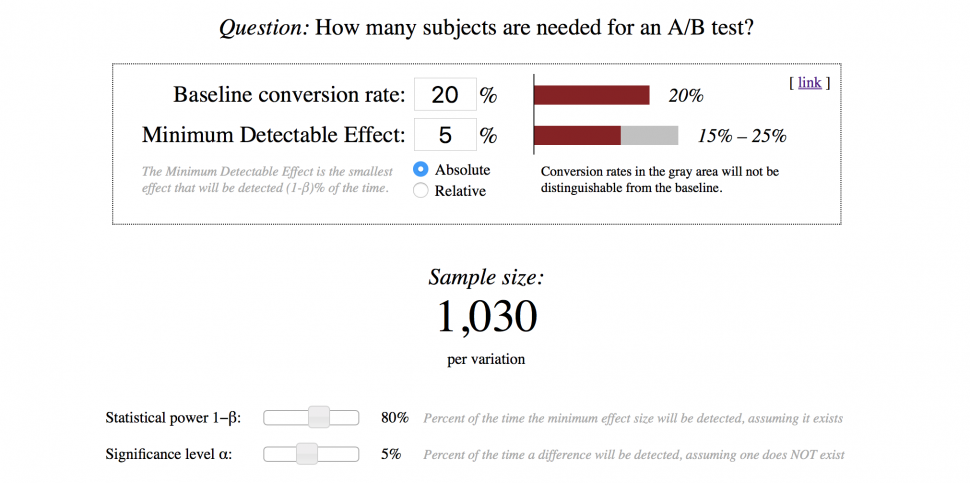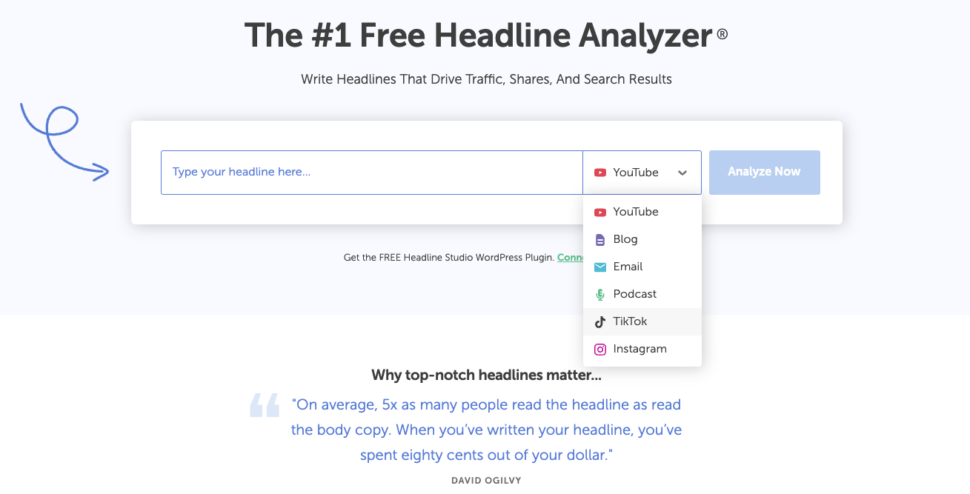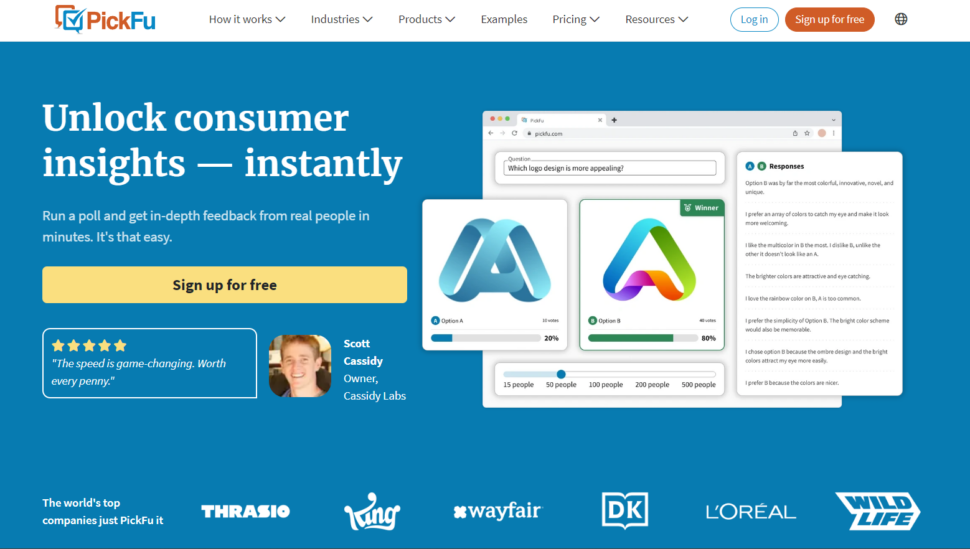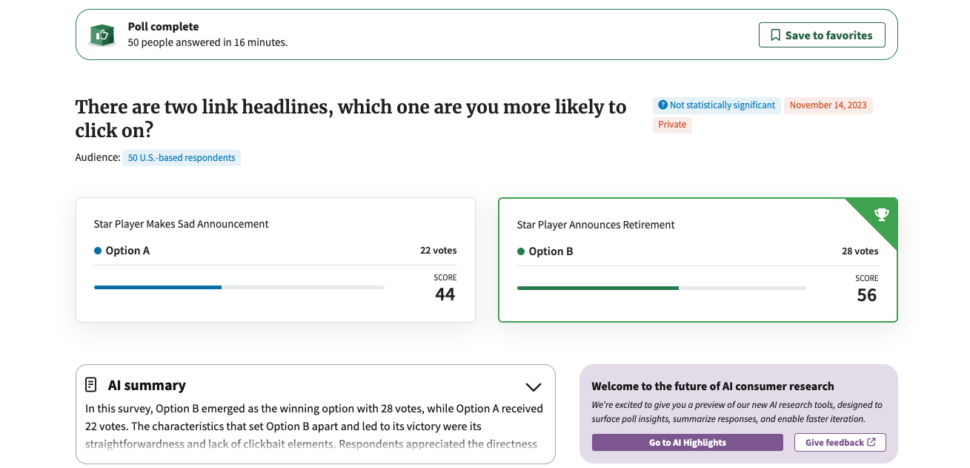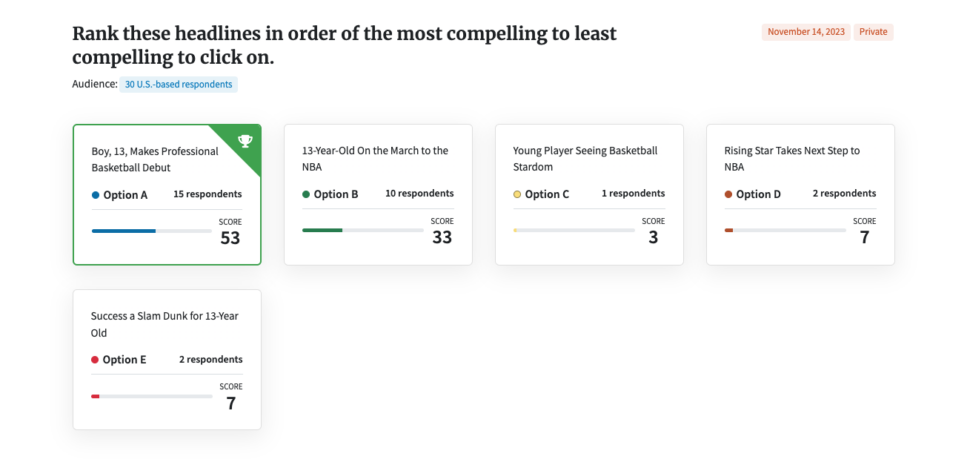Headline testing is one of the best ways to optimize your content. It doesn’t matter if you’re writing headlines or titles for your Amazon listings, content marketing campaigns, your latest novel, or a news article – the right headline is the difference between shareable, popular content and a piece that readers overlook.
In this article, we’ll share the top ways to do headline testing. First, let’s review what exactly it is.
What is headline testing?
Headline testing is exactly what it sounds like: the process of analyzing your headline to make sure it will resonate with the majority of people in your target audience.
There are proactive and reactive ways to test your headlines. Reactive headline tests include:
· A/B testing
· Analyzing metrics for your existing headline
Proactive headline tests include:
· Using Google Answers to see popular questions
· Surveying the public to gauge their reactions
· Using AI tools to assess your copy
· Analyzing past headline metrics
Each of these methods has pros and cons. Proactive testing means you can use the best possible headline from the start, which improves your efficiency and performance. Reactive testing is usually less efficient and effective because you’re evaluating a headline that’s already live, so you might be missing opportunities to capture more eyeballs – but it’s still a good way to optimize what you have.
Now that we’ve established our benchmark, here are our top three ways to do headline testing.
1. Live A/B testing
A/B testing your headline is the best kind of reactive test. It allows you to put two different headlines out in the real world and assess the response to both. If one outperforms the other by a significant amount, you know which headline to ultimately choose.
This style of testing works best if your headline is driving link clicks – for example, from an email newsletter or a paid ad campaign. You can also run A/B tests on your website if your content management system (CMS) has that capability, or by adding code or using dedicated tools. For example, some WordPress plugins offer an A/B testing tool.
A downside of live A/B testing is that you need to ensure your headlines are being delivered in similar ways, to similar audiences. Most A/B test systems on major email and ad platforms let you do this, but not all do it well. It’s also important to know that the headline is the main driver of the metric you’re measuring, not something else.
You also need to make sure you get statistically significant results – if you have limited traffic to your website or a small newsletter or ad audience, you might not have enough data to know which headline is really performing best.
Another drawback is that by the time you get your results, you’ve already wasted time showing a potentially “losing” option to your audience. If they don’t click it – they’re already lost.
This is where proactive headline test options have an advantage.
Top headline testing tools
Proactive headline testing tools let you optimize your copy before you present it to the outside world. There are several ways to achieve this.
2. Free headline analysis tools
CoSchedule is a free headline tool that uses a database of millions of headlines to assess the impact of your chosen headline for different channels like your blog, email, YouTube, or social media.
To use it, you’ll need to sign up with your name and email address. Then you can enter your headline and see a report on its effectiveness based on headline best practices. CoSchedule will help you assess the likelihood of someone clicking your header based on the sentiment it detects, and will guide you to make your copy more compelling for a reader.
You can also ask CoSchedule to look at your headline for a variety of channels, including your blog, YouTube, social media (TikTok and Instagram), and even email campaigns.
There is also a paid premium version with more powerful headline-suggesting features.
3. Customer survey tools
Tools that use AI and data to show which headlines perform best are great, but they can only tell you so much. For a deeper look at why certain headlines perform better, you’ll need a more personal touch (AKA, feedback from real people).
PickFu is a customer insights platform that enables marketers, designers, entrepreneurs, and more to ask hundreds of respondents for feedback via polls – and get responses back within a few hours. The panel of 15 million survey participants across nearly 100 demographic segments provides you with real-world insights into consumer preferences.
PickFu includes several different poll types, but for this use case, we recommend either a Head-to-Head poll or a Ranked poll. Let’s take a look at each one.
Head-to-Head polls
Head-to-Head polls let you compare two options directly. You simply create the headline, and ask the PickFu panel to select the most compelling option. Responses come in as little as an hour.
Even with short headlines like this Head-to-Head headline test (“Star Player Makes Sad Announcement” vs “Star Player Announces Retirement”) you’ll get in-depth results quickly and easily.
The built-in natural language AI tools will also analyze the respondents’ comments and identify key themes. In this case, the platform summarized responses and said:
“When analyzing the top three topics that were important across all options, it becomes evident that respondents valued headlines that triggered emotions or curiosity. The first topic was curiosity – respondents expressed a desire to know more about what a sad announcement entails or what specific details are hidden behind an intriguing headline. The second topic was emotional appeal – some respondents were drawn to headlines that evoked emotions such as sadness or mystery. Lastly, there was a strong preference for straightforwardness – many participants appreciated headlines like “retirement” in Option B because they clearly conveyed what the article would be about without any misleading elements.”
Marketers and content editors can use these insights to inform future headlines or further optimize the current options.
Sign up for free to begin testing your taglines or headlines with Head-to-Head polls.
Ranked polls
A Ranked poll helps you narrow down multiple options when you’re choosing from more than two. In this Ranked headline test, we were able to find a clear winner from five potential options.
Once again, PickFu’s AI analysis helped fill in the blanks about why the winning option was successful, and what participants liked and disliked about each option.
These simple, cost-effective polls provide clear direction quickly that you can apply to your headlines before they hit the market.
See more examples of PickFu Ranked polls here.
Best practices for writing headlines
Modern headline writing has moved away from the succinct, ultra-short copy required by print media, and toward search engine optimization (SEO) friendly headlines.
These newer headlines are generally longer, more detailed, and more descriptive. That means headline writers need to perform more keyword research before constructing their copy.
Even with that change, power words are still as important as ever. Data shows that users overwhelmingly prefer emotive words and concepts to draw them in.
Headlines like “How to Smash Your Next Presentation” perform better than “Tips for Writing Good Presentations” because they evoke an emotional response. Punchy and concise headlines will almost always do better with readers, but modern content marketing also has to satisfy SEO needs.
In summary: your headlines should be succinct, yet descriptive enough to include SEO keywords and compelling enough to capture your intended audience.
PickFu offers copywriters a chance to perform proof of concept testing on your headline copy before it hits the streets. Sign up for PickFu today to give it a try – your first poll is on us.
FAQs about headline testing
What is a good score on a headline analyzer?
Just like in high school, a B+ or higher is a strong grade in most testers. A B+ is equivalent to 75% or higher. It’s useful to convert scores to a percentage rating because not all headline testers use the same scale.
Headline analyzers also don’t tell you the full story. The best practice is to pair your headline analyzer results with real-world feedback from a polled audience. Often, these two tests will deliver slightly different results.
What is the difference between a headline and a tagline?
As the name suggests, a headline is a heading. It’s the first thing someone reads that tells them what’s to come on the page or in the article. Headlines are key parts of articles and webpages or product listings on Amazon.
A tagline is a hook. It’s a compelling mission statement designed to draw the audience in. You can use taglines with a headline to pull someone in, or you can use a tagline on its own as a branding tool.
In the Amazon example, you might have a headline that says, “Toy Rubber Ball for Puppies” and a tagline that says “It squeaks!”
What does an A/B test for headlines measure?
An A/B test takes different headlines and measures the click-through rate (CTR) of the headline. For example, if headline A is shown to 100 people and 20 of them click on it, that’s a CTR of 20%. If headline B has a higher click-through-rate, then it’s the more successful of the two.
Some A/B tests also allow you to measure time on site, conversion ratio, and bounce rate to help assess the whole-of-life success of your copy.


